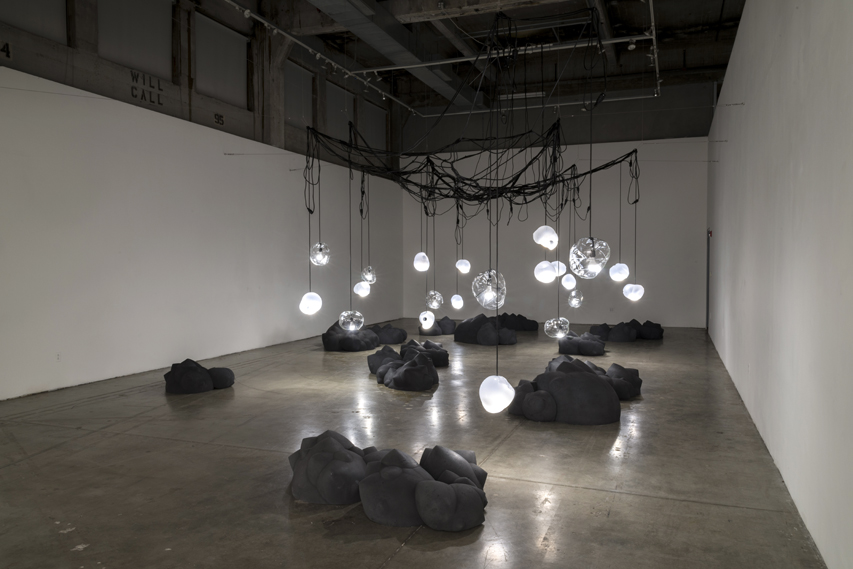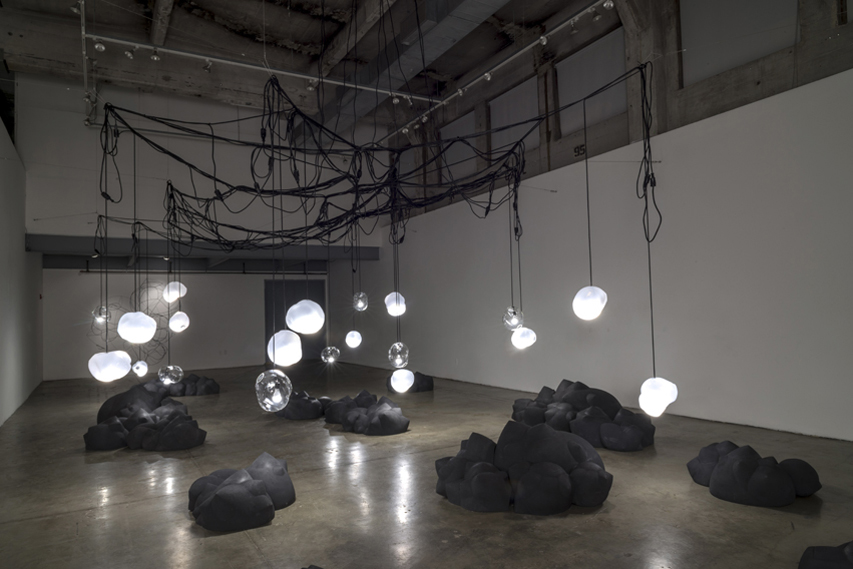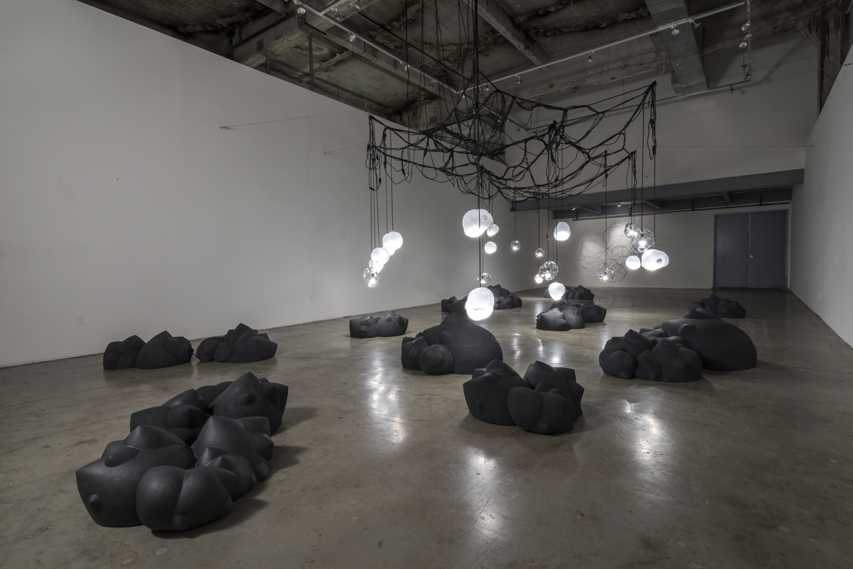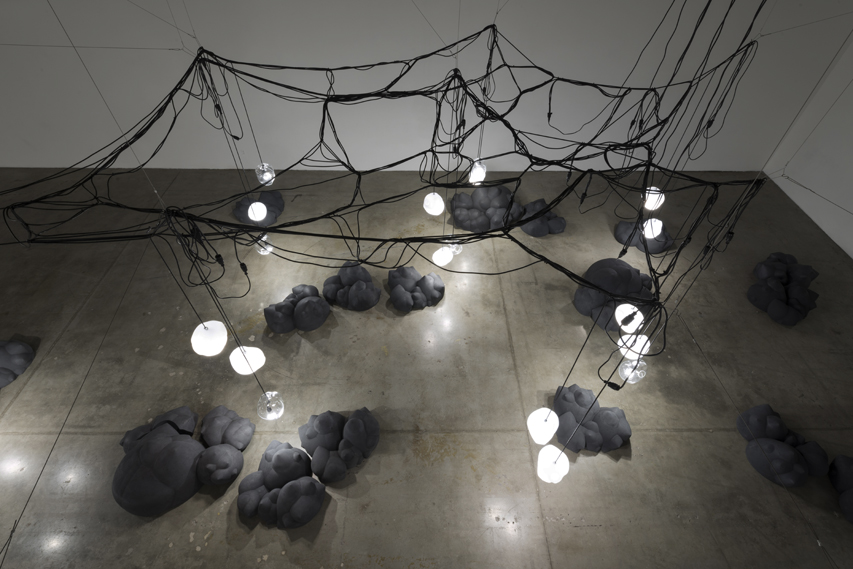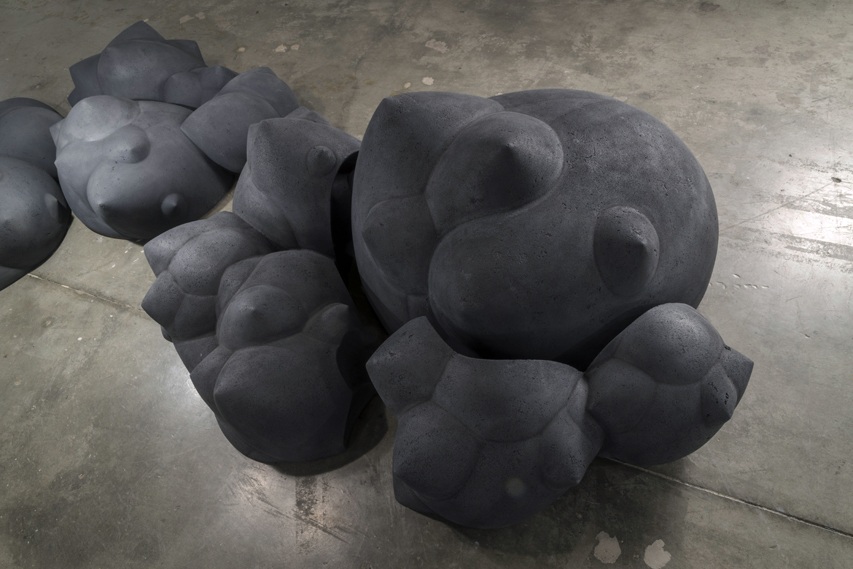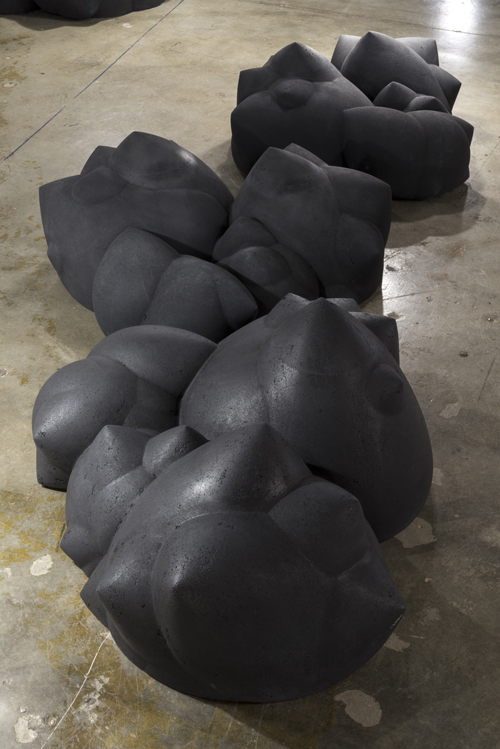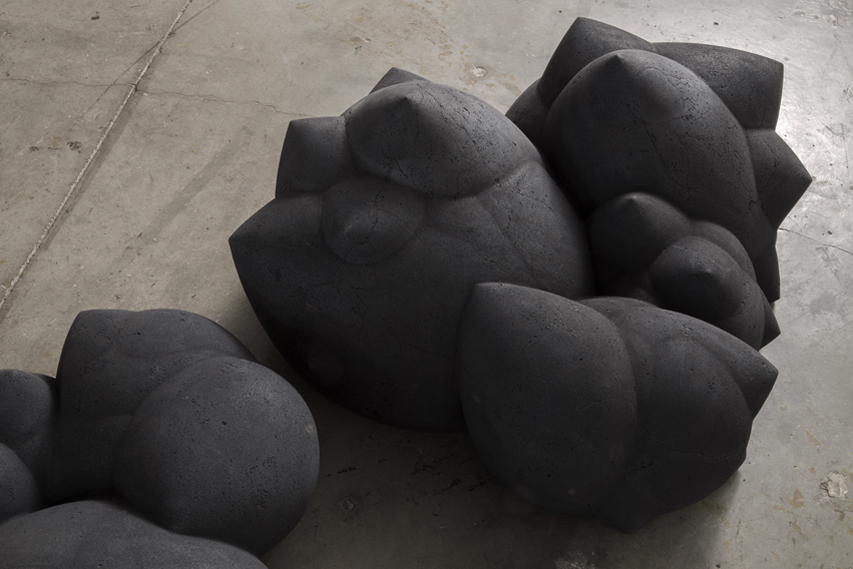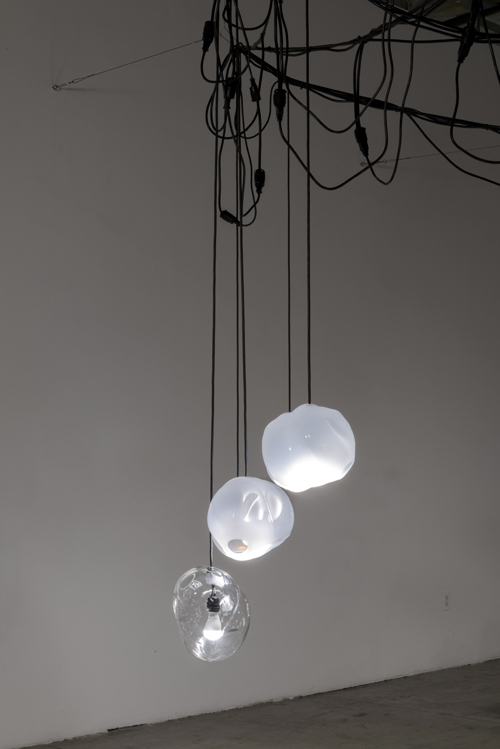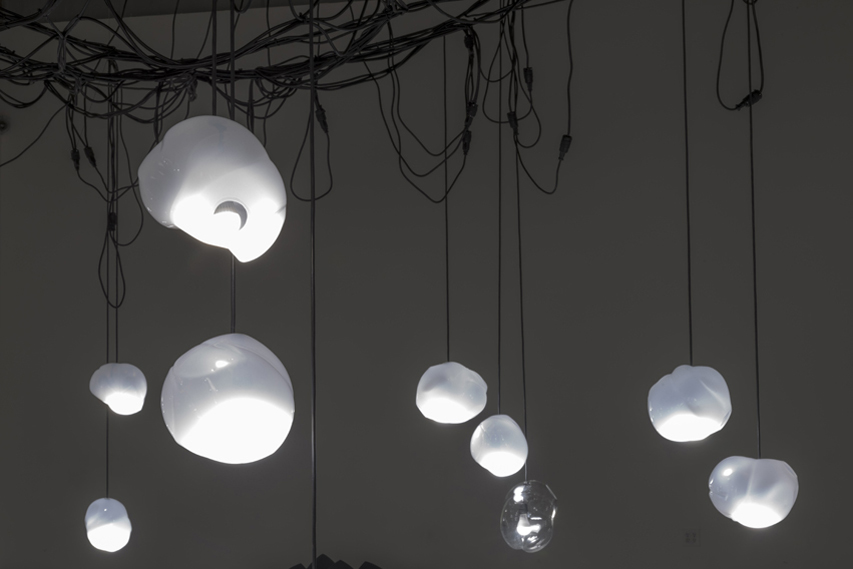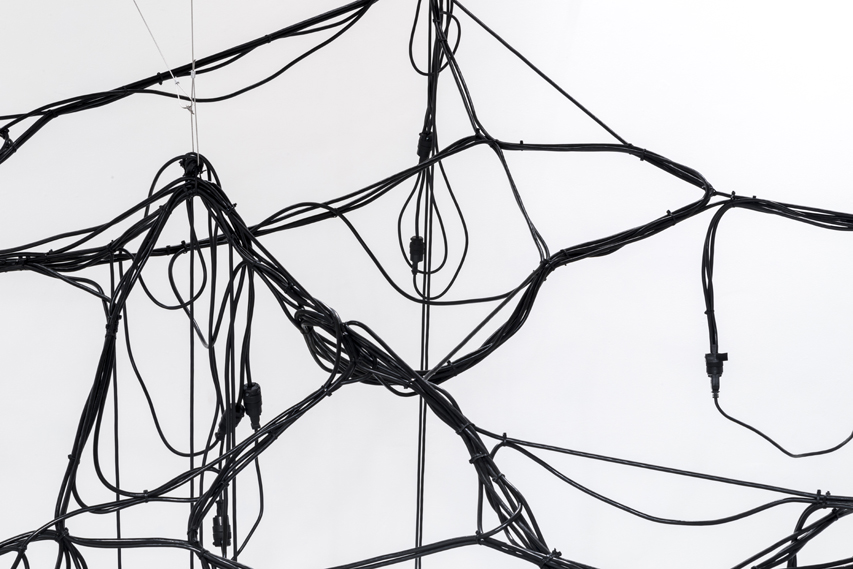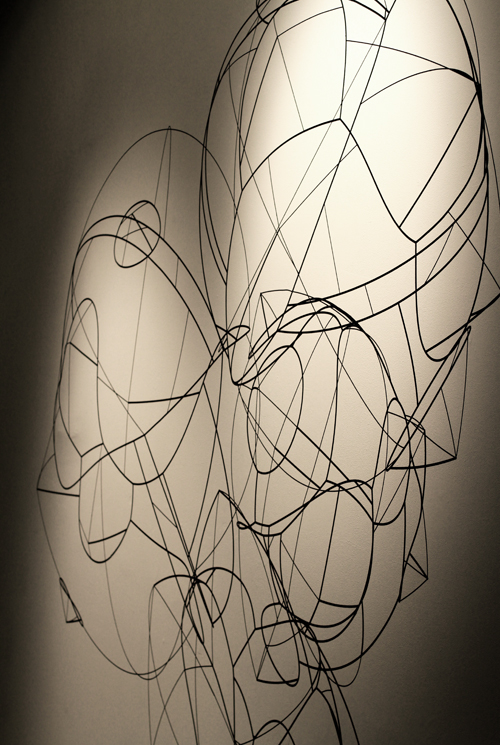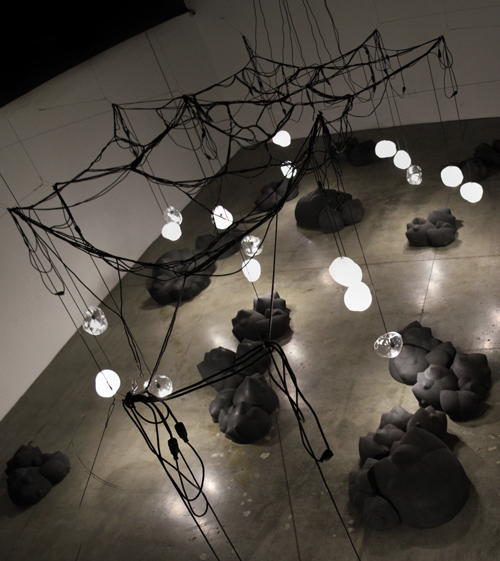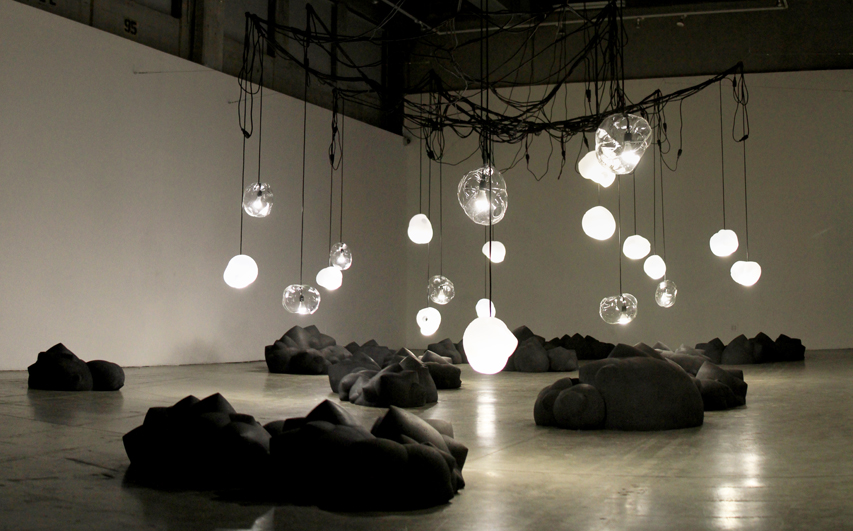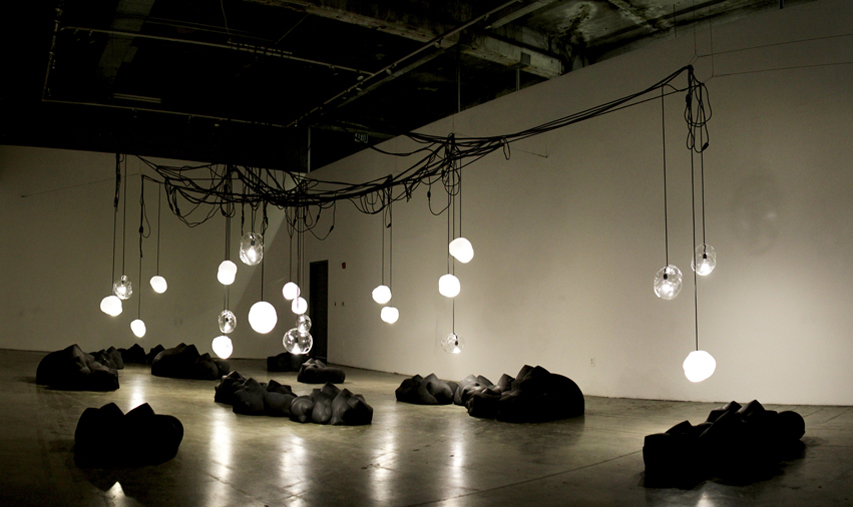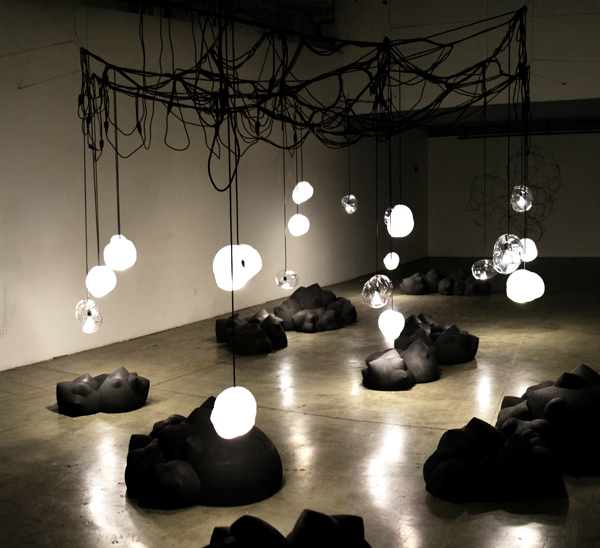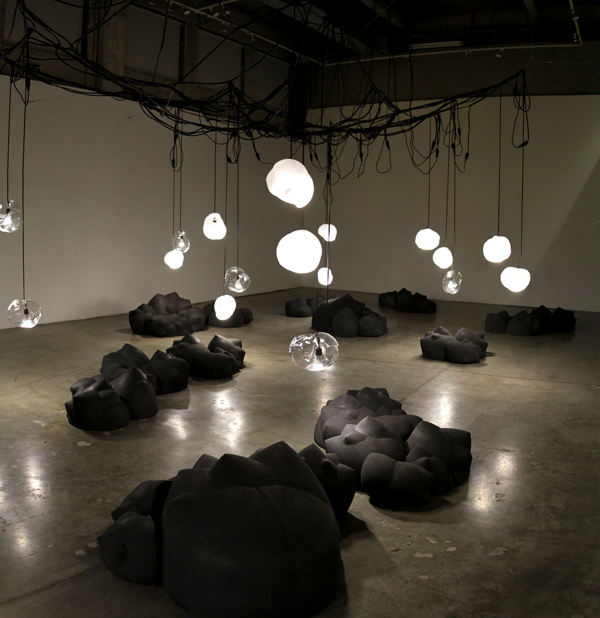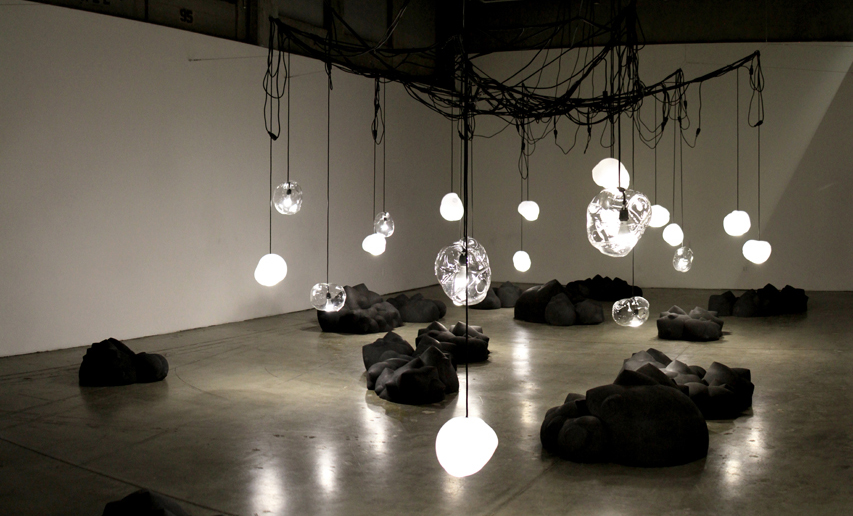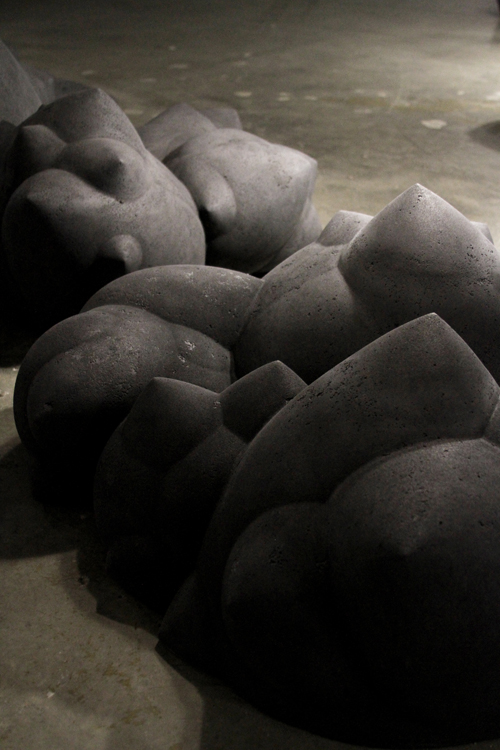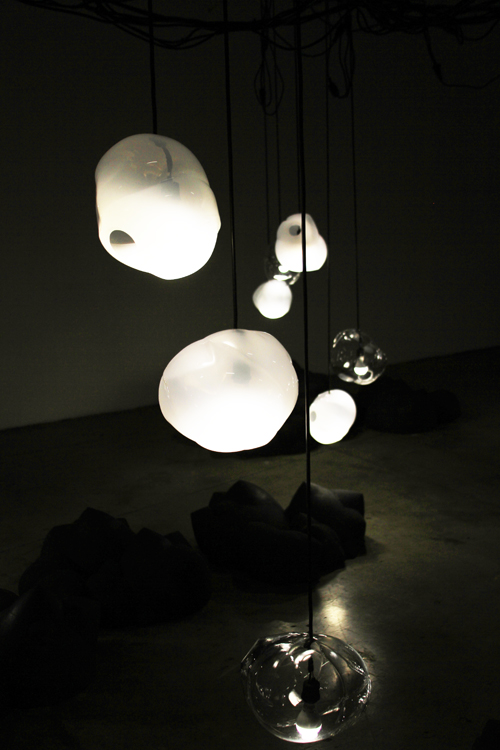Aqueotrope Exhibition
Exhibition Design 2013
Materializing the mathematical, the exact translation of virtual instructions in the form of drawings or codes to their material actualization, is a fundamental procedure in the production of architecture. This exchange between the mathematical realm and the material realm is instantiated as a series of phase transitions between a specified geometric constellation and a selected set of materials. Rather than assuming this exchange to be inert in nature, Aqueotrope explores the influx of non-inert forms of matter into material assemblies. The project focuses on capturing qualities that would appear to be incongruous to the processes and tools used to generate them, pursuing the apparent vagaries of matter in flux albeit through the use of highly controlled algorithmic and machinic processes. The constituents of Aqueotrope are designed to exploit the transformation between states of fluidity and solidity germane to casting. This fluxional behavior is accentuated by considering the space in which this material transaction occurs, namely the mold, as a non-inert entity, enabling it to produce a multitude of differential outcomes through iterative reuse. A conscious calibration of the mold geometry enables it to collaborate with fluid transitions, rather than privileging the mold as entirely deterministic of the formal outcome. Culling out and selectively amplifying the inherent physical properties of the casting material in response to the qualities of the negative mold produces forms that deviate in a controlled manner from the original model.
Aqueotrope explores the roofscape as a site for the development of synthetic architectural systems that are informed by and integrate systems of organic matter. The project proposes an architecture that has the capacity to embrace entropic tendencies and exploit the latent potential of energetic exchanges—in this case the transfer of moisture through an architectural medium and its effects on more extensive ecologies. Aqueotrope reconsiders the extensive green-roof typology as an immersive roofscape and focuses on amplifying its hydrodynamic potential. The emergence of cusp and contour in the roof tile is activated for its role as a water shedding or channeling device. The material properties of ceramics with varying degrees of porosity and surface articulation are coupled with a morphology of protuberant forms in order to perform as hydrophilic and hydrophobic constituents of a roofscape designed to subtly tamper with atmospheric effects in its specific environment and conjure the potentials of an architecture that embraces the fluxion of matter.
An archipelago of gray ceramic tiles situated on the gallery floor is illuminated by a series of orbicular glass light fixtures. A cable sargassum confounds the simple diagram of a closed electrical circuit with the entropic tendencies of accumulation, excess and disorder, and in doing so, creates a third spatial layer – a drawing manifested in space, a canopy suspended above an unnatural gray ceramic landscape.
Exhibition Design – servo >> Design Partners - Ulrika Karlsson, Marcelyn Gow >> Design Team – William Mohline, Jonah Fritzell >> Mold Fabrication - Nick Petronzio >> Glass Fabrication - Josh Gelfand >> Aqueotrope is supported in part by the Graham Foundation for Advanced Studies in the Fine Arts >> Additional support is provided by the Pasadena Art Alliance, the Swedish Research Council, Formas, SRE, Vetenskapsrådet, and the Southern California Institute of Architecture >> Photography - Joshua White (images 1-27), Karim Attoui (images 18-28), Ryan Martinez (image 29)

